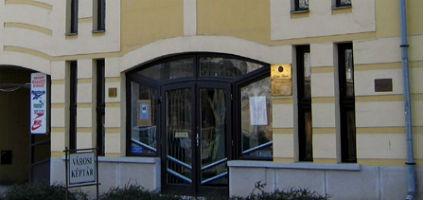2024. November 22. Friday
Town Gallery - Orosháza
 |
Address: 5900, Orosháza Thék Endre utca 1.
Phone number: (68) 472-350, (68) 412-523
E-mail: keptar@pmk.oroshaza.hu
Opening hours: Tue-Wed 9-14, Thu 10-17, Sat 9-13
|
The painter, graphic artist, designer and photo artist Pap Gyula spent his childhood in Orsova and Temesvár. He moved near Vienna with his parents in 1912. In 1914-1917, he studies at the K. u. K. Graphische Lehr- und Versuchsanstalt of Vienna.
In 1917-1918, he fought at the front of Doberdo with the troopers no 61. In 1918-1919, he studied at the Applied Arts Collage of Budapest. In the Fall of 1919 he visited his parents and at the same time organized his first independent exhibition in Vienna in 1920 about the horror of the war. In 1920-1921, he studies at the Bauhaus in Weimar where he worked in the metal workshop. He designed his first works that are still now the first representative pieces of the institution. In 1924-1925, he worked as a lithographer in Nagyszeben and Kolozsvárott where he also did painting and photography.
He published the magazine titled 'The Science of Life' that dealt with natural way of life. In 1926-1934, he taught at the Itten-Schule Arts School of Berlin. His style of paintings was based on large concise forms that later was complemented with surrealism. In 1934, he returned to live in Budapest but was traveling around the country in 1934-1945 to paint the land and the people.
He gave lectures and organized exhibitions in his studio. His students included the Work Circle of Kassák. In 1946-49, he was the principal of the People's Collage of Nagymaros. His paintings developed with new features again. In 1942-1962, he was the teacher of the Fine Arts Collage of Budapest. From the second half of the 50's landscape painting played important part in his art. His see-series is a good example of them. From the 70's his paintings became more playful, the new rhythmic and abstract forms regained their position again.
His works have been displayed at several Hungarian and International exhibitions. Many of them can be found in private collections as well. He was given the title Merited Artist in Hungary in 1970, Eminent Artist in 1981. In 1978, he received the Bauhaus Memorial Plague in Dessau.
In 1917-1918, he fought at the front of Doberdo with the troopers no 61. In 1918-1919, he studied at the Applied Arts Collage of Budapest. In the Fall of 1919 he visited his parents and at the same time organized his first independent exhibition in Vienna in 1920 about the horror of the war. In 1920-1921, he studies at the Bauhaus in Weimar where he worked in the metal workshop. He designed his first works that are still now the first representative pieces of the institution. In 1924-1925, he worked as a lithographer in Nagyszeben and Kolozsvárott where he also did painting and photography.
He published the magazine titled 'The Science of Life' that dealt with natural way of life. In 1926-1934, he taught at the Itten-Schule Arts School of Berlin. His style of paintings was based on large concise forms that later was complemented with surrealism. In 1934, he returned to live in Budapest but was traveling around the country in 1934-1945 to paint the land and the people.
He gave lectures and organized exhibitions in his studio. His students included the Work Circle of Kassák. In 1946-49, he was the principal of the People's Collage of Nagymaros. His paintings developed with new features again. In 1942-1962, he was the teacher of the Fine Arts Collage of Budapest. From the second half of the 50's landscape painting played important part in his art. His see-series is a good example of them. From the 70's his paintings became more playful, the new rhythmic and abstract forms regained their position again.
His works have been displayed at several Hungarian and International exhibitions. Many of them can be found in private collections as well. He was given the title Merited Artist in Hungary in 1970, Eminent Artist in 1981. In 1978, he received the Bauhaus Memorial Plague in Dessau.